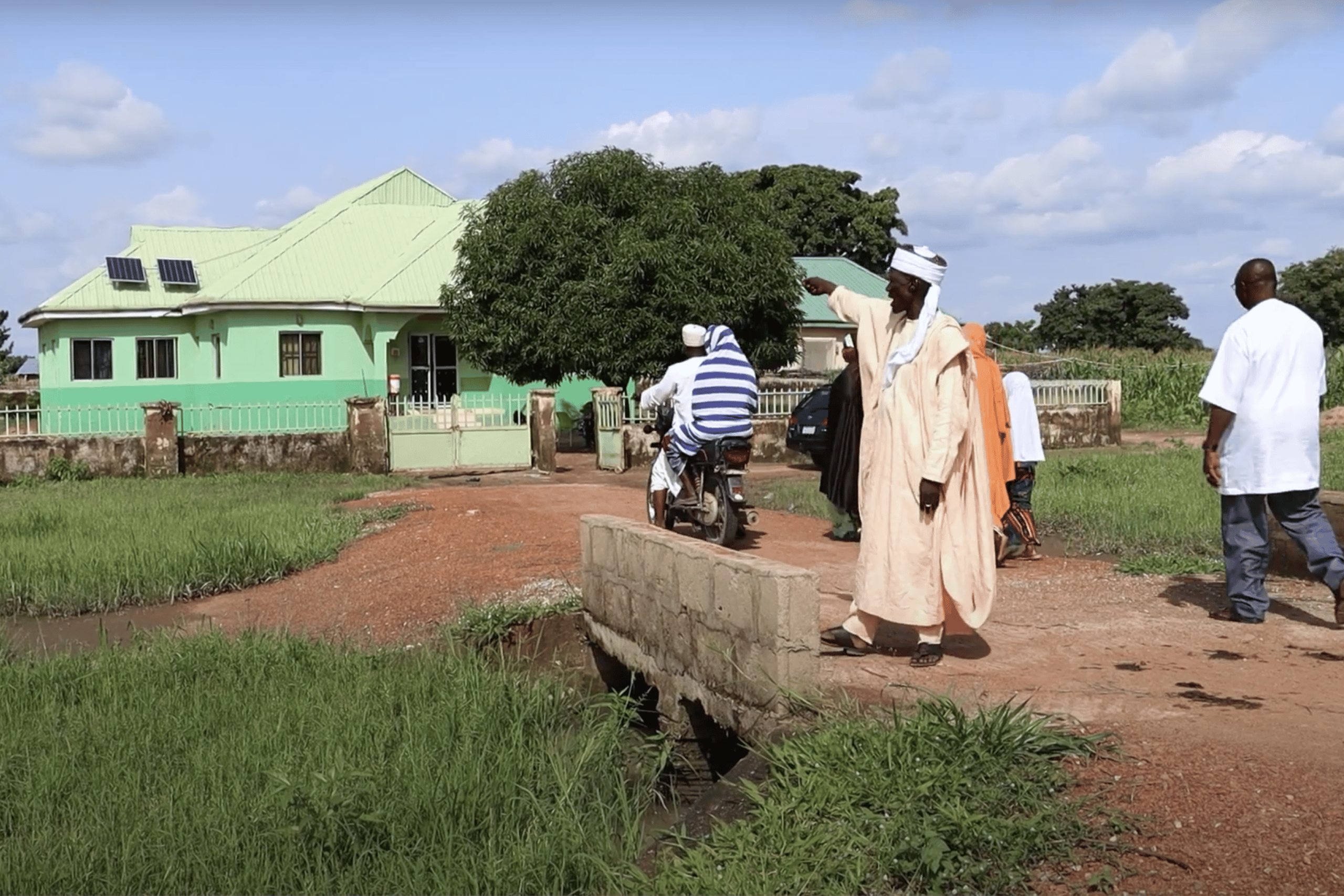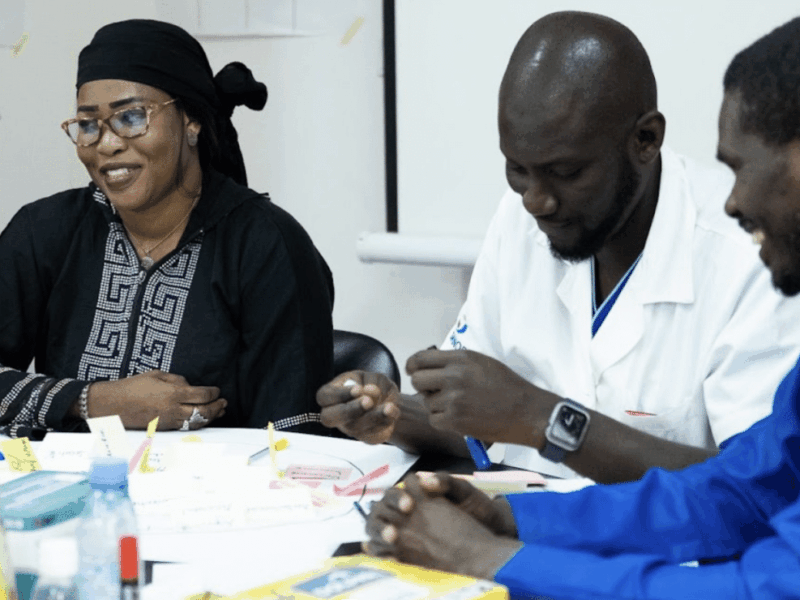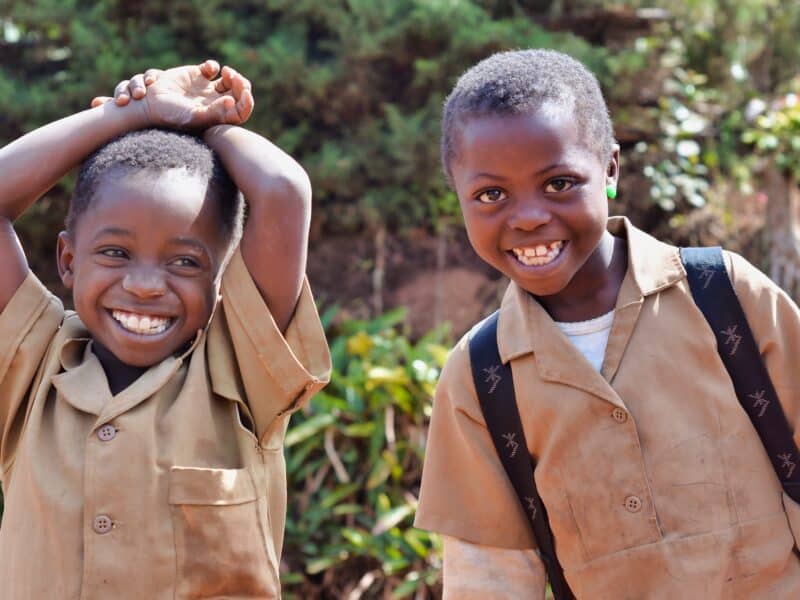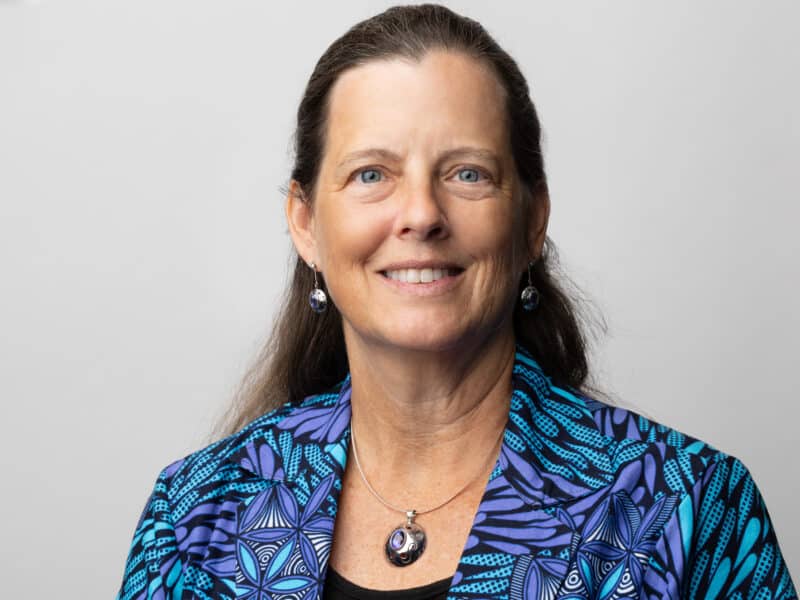In February 2014, the town of Saminaka in Northwestern Nigeria built a health facility to ensure that local women had a nearby clinic for pre-natal care appointments, routine immunizations for their children and a safe place to deliver babies.
Then the rains came.
It turned out that during the rainy season, from May to September, the brand-new health center nestled among farmland was suddenly difficult to access. With water rising over knee-height at times, pregnant mothers and women with their young children just couldn’t make it to their appointments. Women started reverting to traditional medicine for care and home births.
To solve the problem, the Johns Hopkins Center for Communication Programs’ Breakthrough ACTION-Nigeria project recently worked with the Ward Development Committee in Saminaka to build their capacity to identify challenges in their community and raise local resources to address them. The committee had already created campaigns to boost pre-natal care and delivery in the clinic, but they weren’t seeing the expected jump in demand for those services.
In collaboration with Breakthrough ACTION-Nigeria, the Ward Development Committee came together and proposed a solution to the flooding – to build a pedestrian bridge over the rising water – and figured out how to pay for it with local monetary ($1,200 USD) and in-kind donations.
“The health clinic was supposed to bring health care to the community and prevent residents from having to travel long distances – but the rainy season made that extremely difficult,” said Amina Bala, senior community health advisor for Breakthrough ACTION-Nigeria. “Instead, during the rainy season we saw a drastic reduction in pre-natal care appointments and facility births, the opposite of what the clinic was supposed to accomplish.”
Breakthrough ACTION-Nigeria, which began in 2017, has been providing technical support to many Ward Development Committees in the country, much of the work involving the establishment of community transportation systems, health clinic renovations and establishing new health facilities closer to make it easier for some hard-to-reach communities to access care. This is the first bridge.

“We have been suffering for a long time because there’s no access to the hospital [in the rainy season],” says Ummaru Mohammed, a leader in Saminaka. “By God’s grace, [with this bridge] our women will really benefit … because there will be access to the hospital at all times.”
Says the Ward Development Committee Chair Abdullahi Labbo Shanga: “Breakthrough ACTION-Nigeria united us, trained us and showed us the right path to follow on how to unite our community for the development of our health care. The training was also the reason we were able to come up with this idea.”
Now that the bridge is completed, the community can access the health facility any time of the year, no matter the weather. The evidence: The number of pre-natal visits and facility births have grown significantly.
In 2021, after the bridge was built, the health facility saw a 22 percent increase in pre-natal care visits as compared to 2019, before the bridge was built, and the number of women delivering their babies in the clinic was up 70 percent from before the bridge. Both pre-natal care and facility births increase the likelihood of healthy moms and healthy babies.
“The proof that it worked is in those numbers,” Bala says.






